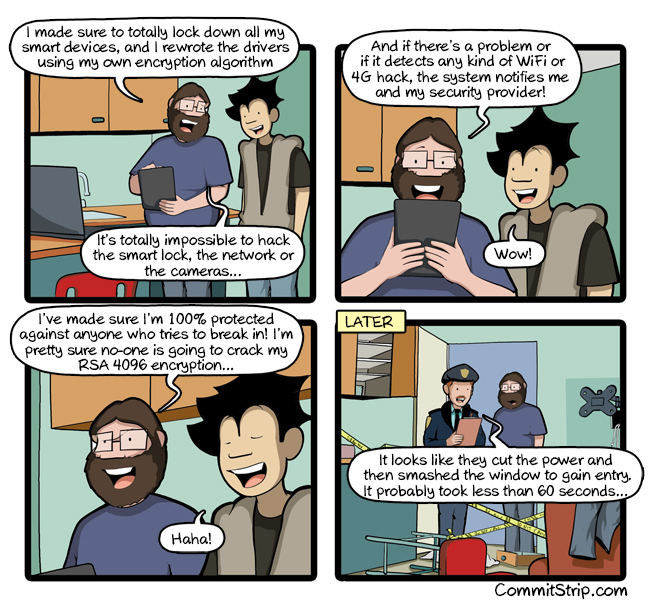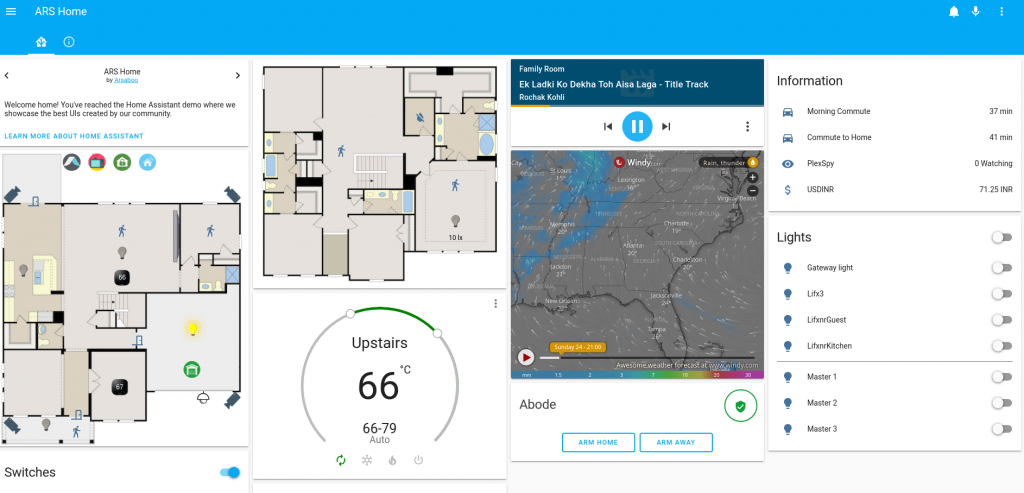
CommitStrip nails it once again …

One day I will get to this whole subject of home automation. Or office automation. Or some other premises automation. That day, I’ll probably need to look at Home Assistant:
Open source home automation that puts local control and privacy first. Powered by a worldwide community of tinkerers and DIY enthusiasts. Perfect to run on a Raspberry Pi or a local server.
Open Source, locally hosted, and private – that’s nice. It runs on a variety of hardware, like Raspberry Pie or Amazon Fire HD tablet, which can be mounted on the wall with 3M wall stickers.
There’s also a whole lot of ready components ready to use. And new ones, I hear, are easy to develop in Python.
Welcome to the programmable world
But here’s a better way to think about what we’re building: It’s the Programmable World. After all, what’s remarkable about this future isn’t the sensors, nor is it that all our sensors and objects and devices are linked together. It’s the fact that once we get enough of these objects onto our networks, they’re no longer one-off novelties or data sources but instead become a coherent system, a vast ensemble that can be choreographed, a body that can dance. Really, it’s the opposite of an “Internet,” a term that even today—in the era of the cloud and the app and the walled garden—connotes a peer-to-peer system in which each node is equally empowered. By contrast, these connected objects will act more like a swarm of drones, a distributed legion of bots, far-flung and sometimes even hidden from view but nevertheless coordinated as if they were a single giant machine.
For the Programmable World to reach its full potential, we need to pass through three stages. The first is simply the act of getting more devices onto the network—more sensors, more processors in everyday objects, more wireless hookups to extract data from the processors that already exist. The second is to make those devices rely on one another, coordinating their actions to carry out simple tasks without any human intervention. The third and final stage, once connected things become ubiquitous, is to understand them as a system to be programmed, a bona fide platform that can run software in much the same manner that a computer or smartphone can. Once we get there, that system will transform the world of everyday objects into a designable environment, a playground for coders and engineers. It will change the whole way we think about the division between the virtual and the physical. This might sound like a scary encroachment of technology, but the Programmable World could actually let us put more of our gadgets away, automating activities we normally do by hand and putting intelligence from the cloud into everything we touch.